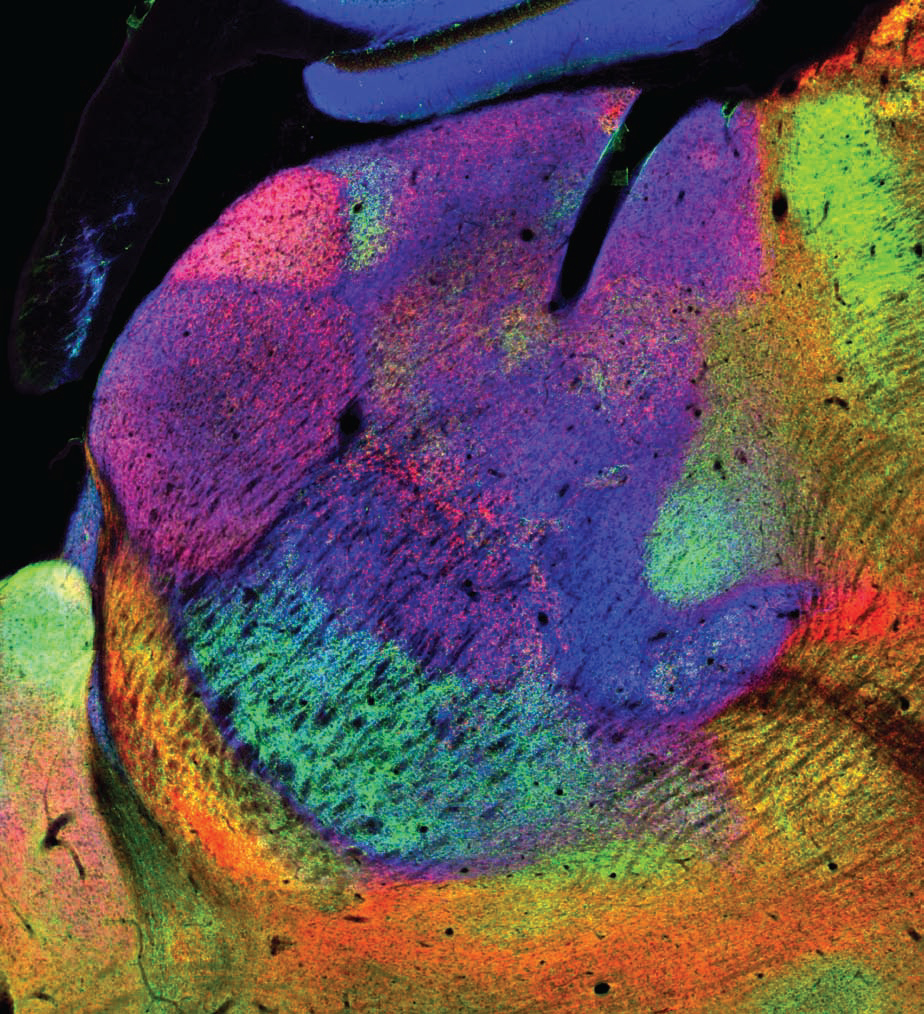Input Zone-Selective Dysrhythmia in Motor Thalamus after Dopamine Depletion.
Nerve cells in a brain area called the motor thalamus are important for movement. We studied how reductions in the chemical messenger dopamine, as occur in Parkinson’s, alters the electrical activities of motor thalamus cells. We discovered that a particular group of motor thalamus cells time their activity with abnormal rhythms. These motor thalamus rhythms adversely affect other brain areas and could trigger some symptoms of Parkinson’s.
The cerebral cortex, basal ganglia and motor thalamus form circuits important for purposeful movement. In Parkinsonism, basal ganglia neurons often exhibit dysrhythmic activity during, and with respect to, the slow (∼1 Hz) and beta-band (15-30 Hz) oscillations that emerge in cortex in a brain state-dependent manner. There remains, however, a pressing need to elucidate the extent to which motor thalamus activity becomes similarly dysrhythmic after dopamine depletion relevant to Parkinsonism. To address this, we recorded single-neuron and ensemble outputs in the basal ganglia-recipient zone (BZ) and cerebellar-recipient zone (CZ) of motor thalamus in anesthetized male dopamine-intact rats and 6-OHDA-lesioned rats during two brain states, respectively defined by cortical slow-wave activity and activation. Two forms of thalamic input zone-selective dysrhythmia manifested after dopamine depletion: (1) BZ neurons, but not CZ neurons, exhibited abnormal phase-shifted firing with respect to cortical slow oscillations prevalent during slow-wave activity; and (2) BZ neurons, but not CZ neurons, inappropriately synchronized their firing and engaged with the exaggerated cortical beta oscillations arising in activated states. These dysrhythmias were not accompanied by the thalamic hypoactivity predicted by canonical firing rate-based models of circuit organization in Parkinsonism. Complementary recordings of neurons in substantia nigra pars reticulata suggested that their altered activity dynamics could underpin the BZ dysrhythmias. Finally, pharmacological perturbations demonstrated that ongoing activity in the motor thalamus bolsters exaggerated beta oscillations in motor cortex. We conclude that BZ neurons are selectively primed to mediate the detrimental influences of abnormal slow and beta-band rhythms on circuit information processing in Parkinsonism.
